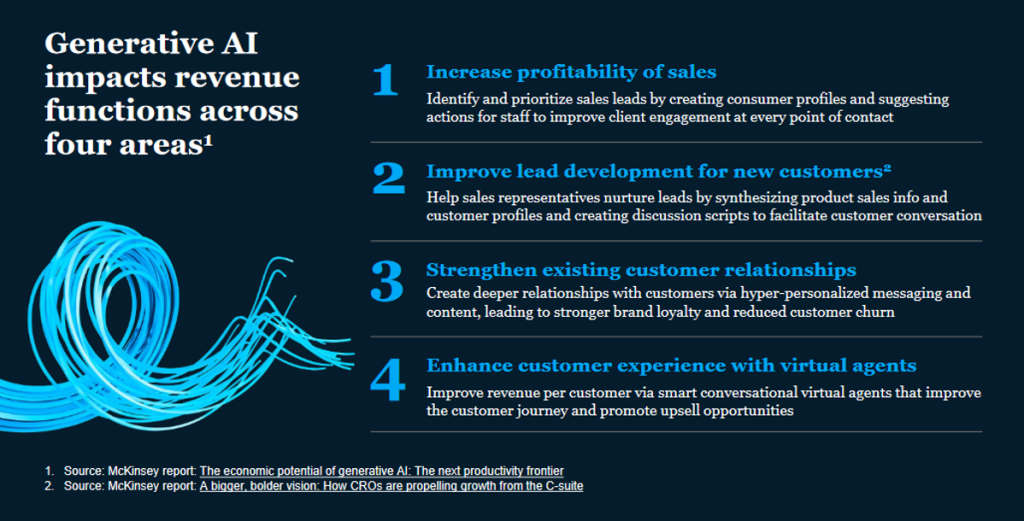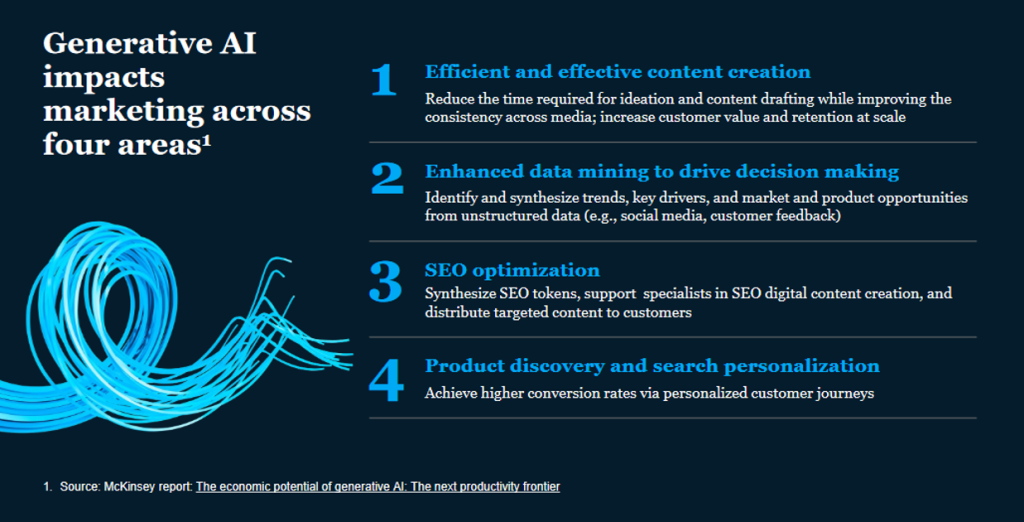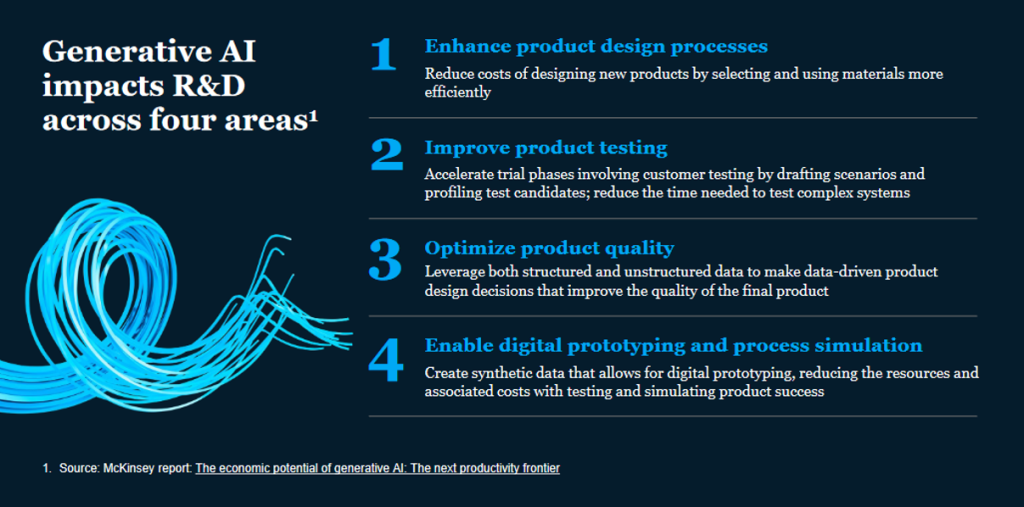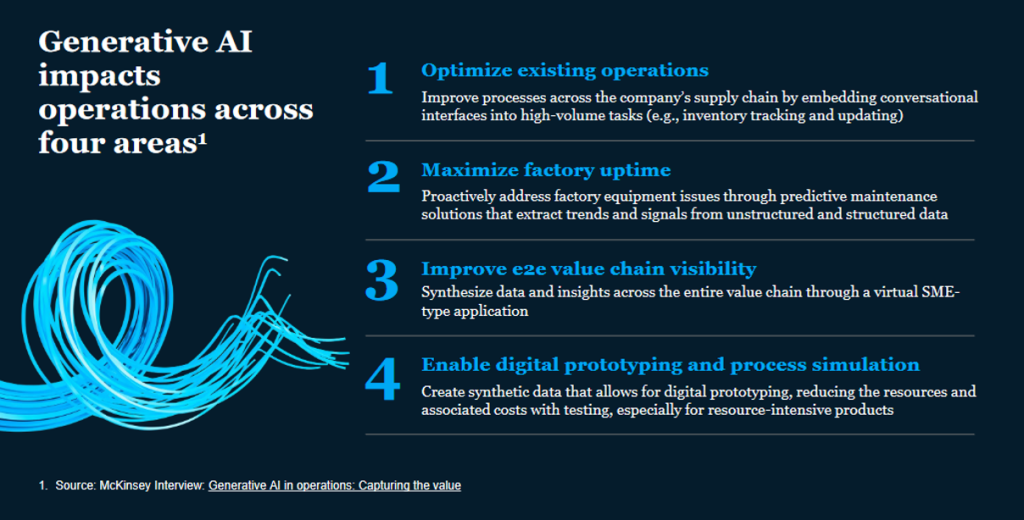By Priya Arora, Global Head of Generative AI Center of Excellence – AWS
By Jacob Newton-Gladstein, Generative AI Center of Excellence Field Enablement Lead – AWS
As the field of generative AI continues to evolve, companies are looking for ways to assess their generative AI prototypes and determine which ones derive real business value. This means establishing a concrete link between an application and its total business value.
The latest assets available through the Generative AI Center of Excellence (CoE) focuses on helping AWS Partners understand that business opportunity by diving deep into use cases in partnership with generative AI thought leaders and CoE contributors. Please visit the CoE to learn more about: LLM Accuracy for Bio-Medical Engineering with Provectus and Generative AI for Retail and E-commerce with Software One.
Additionally, the AWS Generative AI Center of Excellence tapped QuantumBlack, AI by McKinsey to bring AWS Partners insights on the unique needs and priorities of the different personas engaging on the topic of generative AI.
Since business value can be derived differently across various pillars of an organization, we will look at potential use cases for generative AI across four distinct organizational business units, which, based on McKinsey’s research, account for 75% of the total opportunity for generative AI workloads. Specifically we dive deep into the needs of operations leaders, research & development (R&D) leaders, revenue leaders, and marketing leaders.
Key considerations when engaging revenue leaders
Revenue leaders are uniquely positioned for generative AI, as they go across both customer operations and marketing and sales functions. McKinsey & Company estimates that generative AI could increase the sales productivity by approximately 3 to 5 percent of current global sales spend.
Since revenue growth leaders are looking for a very clear correlation between generative AI and revenue growth, consider establishing specific growth targets to achieve for your generative AI workloads. Finally, by focusing on reusable foundational application components that can be adapted across use cases, you can speed up your delivery timeline.
Key considerations when engaging marketing leaders
Marketing leaders have tremendous opportunity to improve their organizations via generative AI. McKinsey & Company estimate that generative AI could increase the productivity of the marketing function with a value between 5 and 15 percent of total marketing spending.
In order to capitalize on these opportunities, consider the focus metrics of a CMO: Conversion rates, customer retention and advertising spend. In order to effectively demonstrate value of generative AI to marketing leaders, consider building tools and dashboards to A/B test personalized advertising and advertising costs, and measure conversion rate alongside your generative AI solutions.
Generative AI for research & development leaders
Research & development leaders can evolve their entire value chain with generative AI. McKinsey & Company estimates that generative AI could deliver productivity with a value between 10 to 15 percent of overall R&D costs.
R&D leaders are not only focused on business outcomes but specifically place high importance on things such as data accuracy, explainability and citations as well as data privacy. In order to appeal to these leaders, focus on building tools that establish a clear link between data inputs and outputs and define clear pre and post processing rules to improve the transparency of generative AI tool outcomes.
Key considerations when engaging operations leaders
Operations leaders are well positioned for generative AI, as productivity uplift is a major benefit of the technology. McKinsey & Company estimates that generative AI could bring up to $280-$530 billion in value for operations functions across industries.
When designing generative AI applications for operations leaders, keep in mind that large scale operations incorporate vast amounts of data and a diverse operator base. As a result, a well thought out data map and proactive integration plan of how to connect generative AI application to an organizations existing work processes would be helpful.
How does Generative AI on AWS enable partners to appeal to the cross-industry leaders
There are some common needs across all generative AI decision makers:
- Generative AI applications go beyond just Large Language Models. You need to understand the full generative AI stack.
- Different problems require different levels of solutions from purpose-built applications to custom trained models or even adapted models through Amazon Bedrock.
- Prototyping generative AI applications is easier than delivering sustained business value by taking those applications to production.
By helping your customers build their generative AI solutions on AWS, organizations gain access to a wide array of generative AI tools including multiple options for generative AI data structures such as Data Lakes and Amazon OpenSearch Services Vector Database to prepare your data for generative AI applications.
You can also access the widest available list of adaptable LLMs through Amazon SageMaker JumpStart and utilize AWS’ purpose built generative AI chips, AWS Trainium and AWS Inferentia, to reduce model training costs.
With Amazon Bedrock, getting to production is straightforward. Customers can quickly leverage the data already have available, choose the best FM, establish guardrails, and rest comfortably with AWS’ security and reliability. With Amazon Q, access multiple products tailored to different personas and use cases. Amazon Q can be leveraged to answer employee questions, summarize data, carry on a conversation, and help them take action. It can also remove heavy lifting for developers by helping them write, debug, test, and transform code.
Finally, the AWS Generative AI Center of Excellence also has thought leadership articles from AWS Partners, including Provectus’ “LLM Accuracy for Bio-Medical Engineering” and SoftwareOne’s “Generative AI for Retail and E-commerce”, which can help guide you towards use case specific applications for generative AI across a variety of industries enabling you to take your applications from POC to production.
Leverage the Generative AI Center of Excellence for resources to support building and executing your Generative AI go-to-market strategy (login required).



